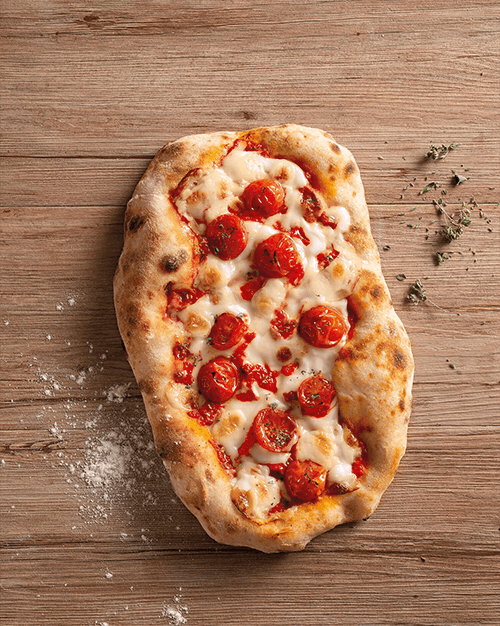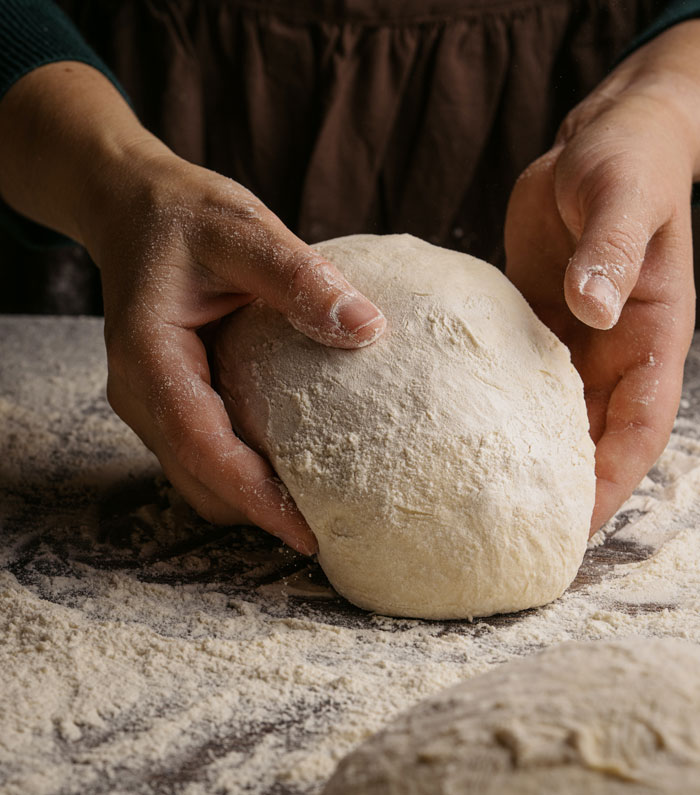Pizza e Pinsa:
sorelle gemelle o cugine lontane?
Two very tasty recipes from the family of yeasted products that, despite their looking similar, are actually just distant relatives: pizza is Neapolitan while pinsa is originally from Rome. It is not only geography that separates them, however: they are two different bakery products, made using different ingredients and techniques. They were even invented in different historical moments. This makes them, for all intents and purposes, like cousins twice removed, with a combination of water, flour and yeast in common but separated by several differences, including the shape – one is round the other oval. Let’s look at them together:
THEIR ORIGINS: FROM NAPLES TO ROME
Pizza has distant origins in time, at least as far back as the year 997 (when the first written documents mentioning it have been found). The best known part of its history, however, is associated with the Queen of Italy Margherita, member of the Savoy family, and dates back to 1889. Legend has it that the cook Raffaele Esposito, to pay tribute to her visit to Naples, came up with the idea of the famous tomato, mozzarella and basil topping and called his creation Pizza Margherita.
Also the recipe for pinsa apparently goes back a long way: it was invented by the Romans, and the poet Virgil mentioned it in his Aeneid. It seems that, after arriving in Italy, Aeneas used to eat a specific focaccia characterised by an oblong shape. The recipe we know today, though, has a much more recent history, starting in the first years of the 21st century, based on an idea of Corrado Di Marco, a pizza maker from Rome who restyled the ancient recipe, turning it into a popular product all over Italy.



INGREDIENTS: ONE FLOUR VERSUS THREE
Although it is possible to change traditional recipes, in case of intolerance to specific ingredients and in order to satisfy personal tastes, for traditional Neapolitan pizza only double zero flour can be used. On the other hand, the typical pinsa dough includes a mix of flours, from wheat, rice and soy respectively, with the addition of sourdough, to which more water is added compared to the amount used for Neapolitan pizza.
LEAVENING: FOR EACH RECIPE, ITS OWN TIME
Even their leavening process is different: pizza requires between two and three hours; the dough for pinsa, on the other hand, is left to rise for 24 hours. As a consequence, the latter is especially suitable for those suffering from digestion problems.
The final result? On the one hand, a perfect circle of soft dough with its high crust; on the other, a uniform, super-crunchy and friable oval: which one do you like best?



